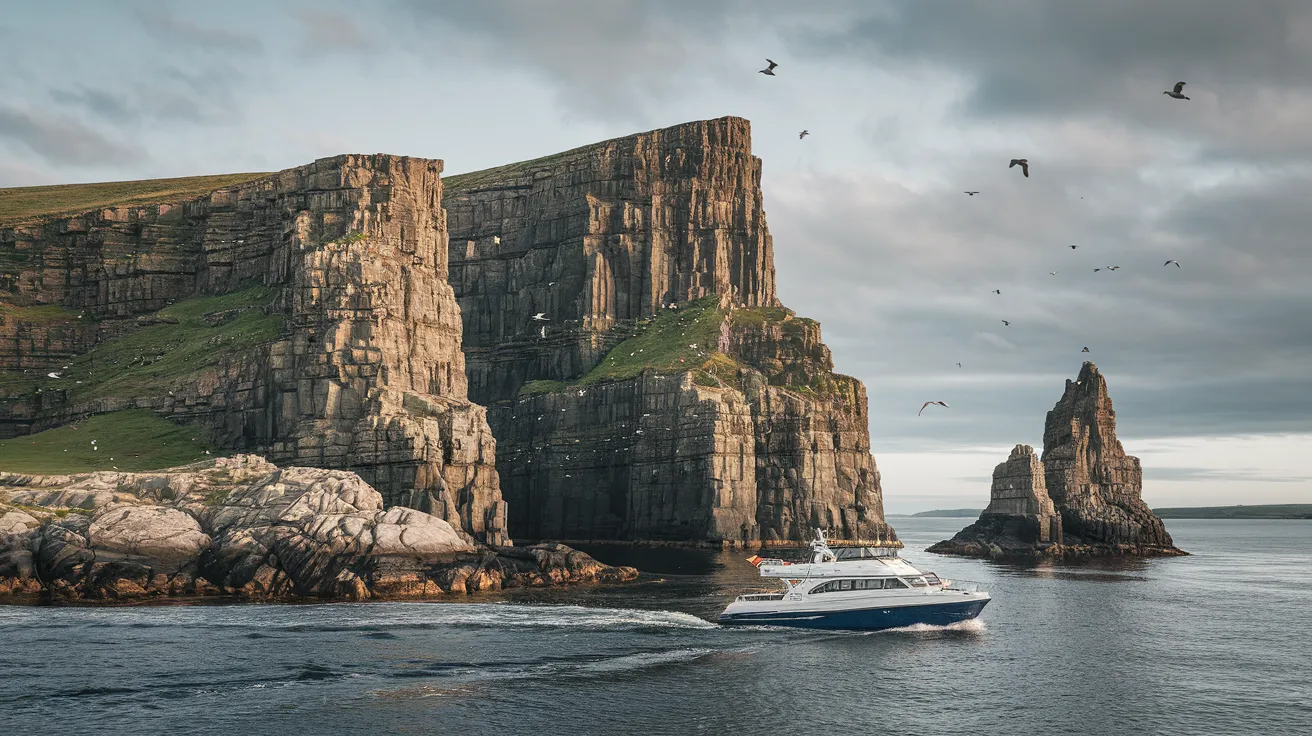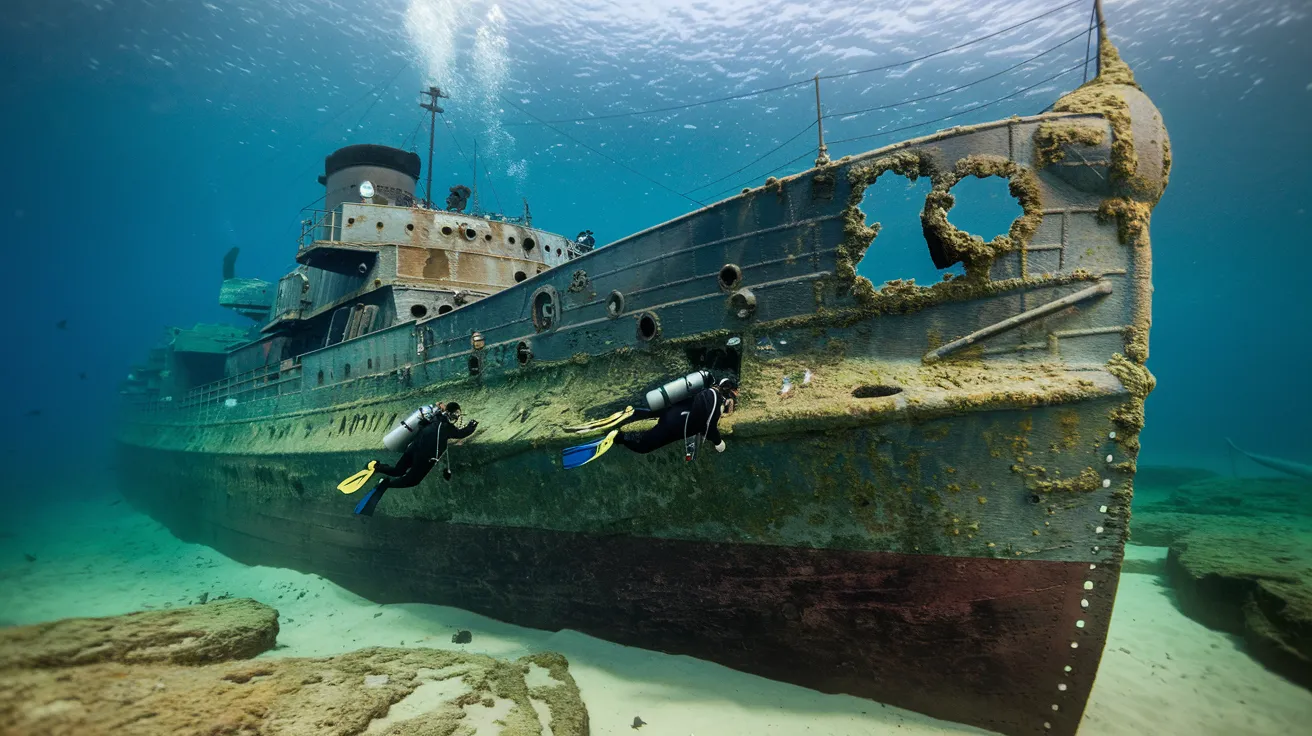Quick Navigation
- Orkney: A Natural Renewable Energy Hub
- Wind Power: From Pioneers to Present Day
- Harnessing the Power of the Sea: Wave Energy
- Tidal Stream Energy: Predictable Power
- Green Hydrogen: Storing Surplus Energy
- Grid Connection Challenges and Future
- Visiting Orkney's Renewable Energy Sites
- Frequently Asked Questions
- Does Orkney produce all its own electricity from renewables?
- What is EMEC?
- Can I see the Orbital O2 turbine?
- Why is Orkney focusing on hydrogen?
Orkney is more than just a place of ancient history and stunning natural beauty; it's a global pioneer in renewable energy innovation. Harnessing the power of its abundant wind, waves, and tides, this archipelago has become a living laboratory for green technologies, generating well over 100% of its electricity needs from renewables since 2013. From community-owned wind turbines and world-leading marine energy test sites to cutting-edge green hydrogen projects, Orkney is actively shaping a sustainable energy future. Explore the key initiatives driving Orkney's green revolution.
Orkney: A Natural Renewable Energy Hub
Several factors make Orkney uniquely suited for renewable energy development:
- Abundant Resources: The islands experience some of Europe's strongest and most consistent winds, along with powerful tidal streams (up to 4 metres per second) in channels like the Pentland Firth and Fall of Warness, and energetic wave conditions on the Atlantic coast.
- European Marine Energy Centre (EMEC): Established in 2003, EMEC is the world's leading facility for testing wave and tidal energy converters in real-sea conditions. Its grid-connected test sites at Billia Croo (wave) and Fall of Warness (tidal) have attracted developers from around the globe.
- Community Engagement: Orkney has a strong history of community involvement in energy projects, with numerous community-owned turbines and widespread adoption of microgeneration technologies (over 10% of homes).
- Innovation Ecosystem: A cluster of expertise exists around EMEC, including research institutions like Heriot-Watt University's ICIT campus in Stromness, local supply chain companies, and supportive bodies like the Orkney Renewable Energy Forum (OREF).
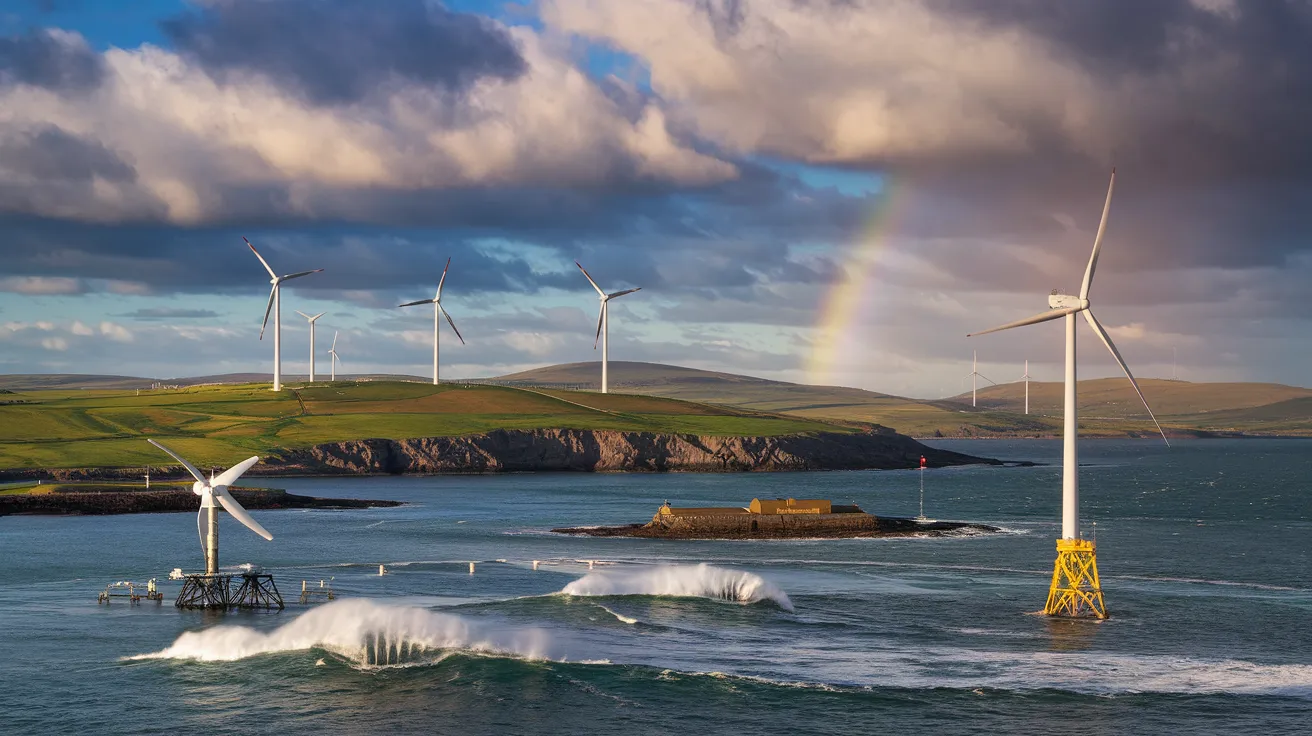
Wind Power: From Pioneers to Present Day
Orkney's wind power journey began early:
- 1950s Pioneering: The UK's first grid-connected wind turbine (a 100kW experimental machine) was installed at Costa Head in the 1950s.
- Burgar Hill Wind Farm: Established in 1983, this was one of the UK's first commercial wind farms and continues to operate, testing various turbine technologies over the years.
- Community & Commercial Turbines: Today, Orkney hosts numerous large turbines, including 12 community-owned projects, alongside over 700 smaller domestic turbines. This distributed generation contributes significantly to the islands exceeding their own electricity demand.
- Offshore Potential: The planned 2GW West of Orkney Windfarm, set to be operational by 2030, represents a massive scaling-up of offshore wind capacity in the region.
Harnessing the Power of the Sea: Wave Energy
EMEC's Billia Croo wave test site, located on the exposed Atlantic coast near Stromness, provides grid-connected berths for full-scale wave energy converters to prove their performance and survivability in harsh conditions.
- Test Site: Offers five grid-connected berths in water depths up to 70 metres, exposed to waves that can exceed 18 metres in height.
- Technologies Tested: Numerous innovative devices designed to capture energy from the vertical motion (heave) or horizontal surge of waves have been tested here over the years, representing various designs like attenuators, point absorbers, and oscillating water columns.
- Challenges: Developing devices that can reliably generate electricity while surviving the extreme forces of the Atlantic remains a significant engineering challenge, but crucial progress is made at sites like Billia Croo.
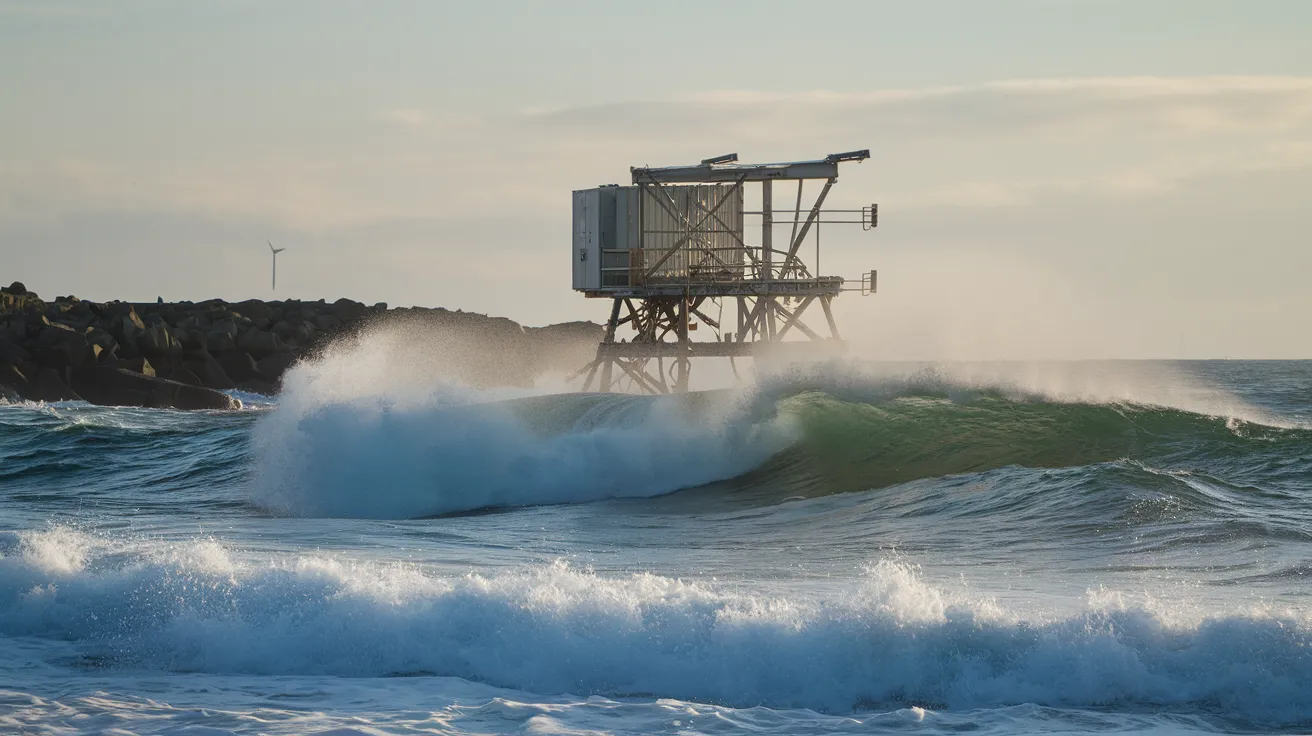
Tidal Stream Energy: Predictable Power
Orkney's powerful tidal streams offer a predictable source of renewable energy. EMEC's Fall of Warness tidal test site, off the island of Eday, is at the forefront of this technology:
- Test Site: Located in a channel with tidal flows up to 4 m/s (8 knots), providing eight grid-connected berths for testing tidal turbines.
- Orbital Marine Power O2: One of the most successful devices tested at EMEC is the Orbital O2, the world's most powerful tidal turbine. This 74-metre floating superstructure with twin rotors has been exporting clean power to the Orkney grid since 2021, demonstrating the viability of commercial-scale tidal energy.
- Other Technologies: Various other tidal turbine designs (horizontal axis, vertical axis, seabed-mounted) have been deployed and tested at the Fall of Warness site over the years.

Green Hydrogen: Storing Surplus Energy
A major challenge for Orkney is that its renewable generation often exceeds the capacity of the grid connection to mainland Scotland. Green hydrogen production offers a solution:
- Surf 'n' Turf Project: A pioneering project (2015-2017) that used surplus electricity from wind (Eday community turbine) and tidal (EMEC test site) to power a 500kW electrolyser on Eday, producing hydrogen gas.
- Hydrogen Storage & Transport: The hydrogen was compressed and transported via sea trailers to Kirkwall.
- Hydrogen Use: Used to power a fuel cell providing auxiliary power to inter-island ferries docked in Kirkwall harbour, and potentially for heating or vehicles.
- ReFLEX Orkney Project: A follow-on £28.5m project aiming to create an integrated 'smart local energy system', combining renewables, battery storage, smart EV charging, and hydrogen to decarbonise Orkney's energy, heat, and transport sectors.
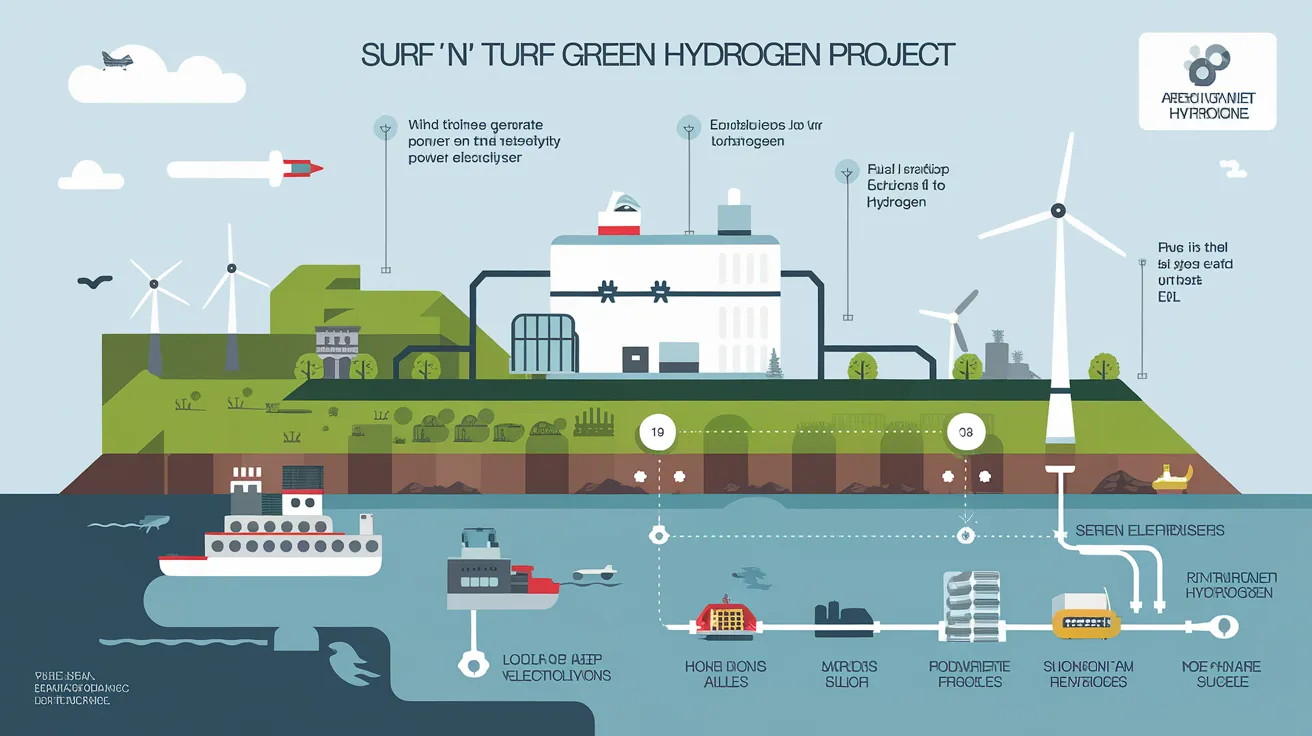
Grid Connection Challenges and Future
Orkney's success has created a bottleneck:
- Grid Constraints: The existing subsea cable connecting Orkney to the Scottish mainland frequently reaches capacity, forcing wind turbines to be curtailed (switched off) and preventing new renewable projects from connecting.
- New Interconnector: A new high-voltage subsea cable is planned, linked to the development of large offshore wind farms like the West of Orkney Windfarm, which will significantly increase export capacity.
- Smart Solutions: Projects like ReFLEX are developing smart grid technologies and local energy storage (batteries, hydrogen) to better manage supply and demand within Orkney, reducing reliance on the constrained grid connection.
Visiting Orkney's Renewable Energy Sites
- EMEC Viewpoints: While direct access to test devices is restricted, viewpoints near Billia Croo (Warebeth beach road) and on Eday (near Fall of Warness) allow observation of the test sites and deployed technologies (binoculars recommended).
- Information & Tours: Check the EMEC website for visitor information or potential tour opportunities. Heriot-Watt University's ICIT campus in Stromness is a hub for marine renewable research. Local tour guides may offer renewable energy themed tours.
- Museums: Exhibits related to Orkney's energy history might be found in local museums.
To find relevant videos, search YouTube for "EMEC Orkney", "Orbital O2 tidal turbine", or "Orkney hydrogen project".
Frequently Asked Questions
Does Orkney produce all its own electricity from renewables?
Yes, on an annual basis, Orkney generates over 100% of its electricity demand from renewable sources, primarily wind power.
What is EMEC?
The European Marine Energy Centre (EMEC) is a world-leading test facility based in Orkney for wave and tidal energy converters.
Can I see the Orbital O2 turbine?
The O2 turbine is deployed at the Fall of Warness tidal test site off the island of Eday. It may be visible from viewpoints on Eday or potentially during specific boat tours, but access is generally restricted.
Why is Orkney focusing on hydrogen?
Green hydrogen production allows Orkney to store surplus renewable electricity (that cannot be exported due to grid constraints) and use it for other energy needs like transport (ferries) and potentially heating.
Orkney is not just looking back at its ancient past; it's actively building a sustainable future. Its pioneering work in wind, wave, tidal, and hydrogen energy makes it a globally significant centre for renewable innovation. Visitors can witness this cutting-edge technology against the backdrop of timeless landscapes, offering a unique glimpse into the future of energy. Consider eco-friendly Orkney accommodation to complement your exploration of the islands' green credentials.

